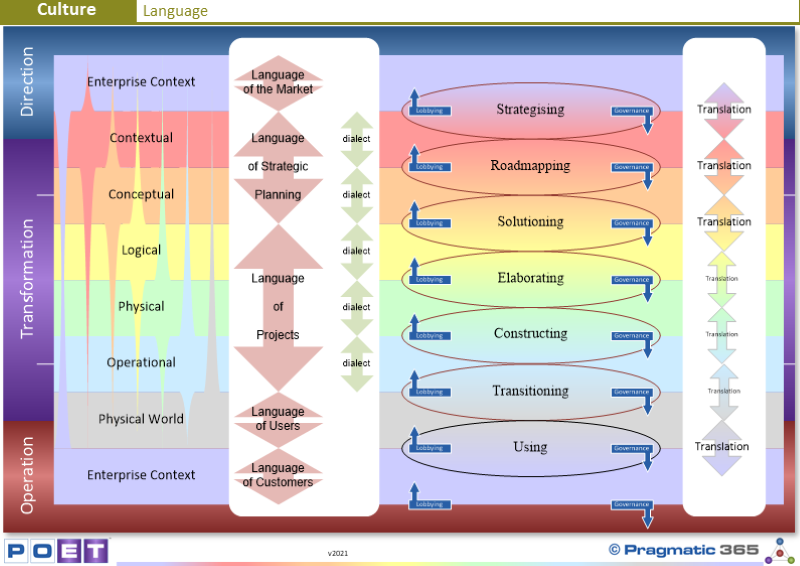https://pragmatic365.org/display-show.asp?Showname=TRAIN-2-Foundation&ComponentNo=000315
What Languages does your Enterprise use for Enterprise Transformation?
Do people recognise when they are talking a different language?
What happens when people say “we are talking a different language”?
Are different languages taught?
If not, how do you expect people to be able to communicate effectively?
https://pragmatic365.org/display-show.asp?Showname=TRAIN-2-Foundation&ComponentNo=000315
FREE EA Training at www.PEAF.com/Training
FREE EA Books at www.PEAF.com/Books
#PEAF #PragmaticEA #EntArch #enterprisearchitecture #BizArch #Change #Innovation #BusinessModel #CEO #Strategy #TOGAF #ITgovernance #agileculture #agile #agileleadership #agilemethodology #itstrategy #ceos
For each phase of the Transformation cascade, people speak either a different dialect or language from the phases above and below.
https://pragmatic365.org/display-show.asp?Showname=TRAIN-2-Foundation&ComponentNo=000315

Although we all speak our native tongue fluently, the same
cannot be said about the language we use to talk about things in relation to
the Transformation of Enterprises. Different people use different words to mean
different things at different times. This is a massive problem which makes
understanding anything anyone says at best impossible and at worst apparently
possible. People, including me, get attached to the meaning of the words we use
and defend those meanings passionately. This is totally understandable because
the meanings we attach to words is the absolute basis for our understanding
things. ...to read more, please Login or Register |
Keypoint |
Adopt this component by... |
For each phase of the Transformation cascade, people speak either a different dialect or language from the phases above and below.
|
C-Suite: Instigate an initiative to educate people on the different languages used in all areas of the Enterprise.
|
Questions to ponder... |
What Languages does your Enterprise use for Enterprise Transformation? |
Do people recognise when they are talking a different language? |
What happens when people say “we are talking a different language”? |
Are different languages taught? |
If not, how do you expect people to be able to communicate effectively? |